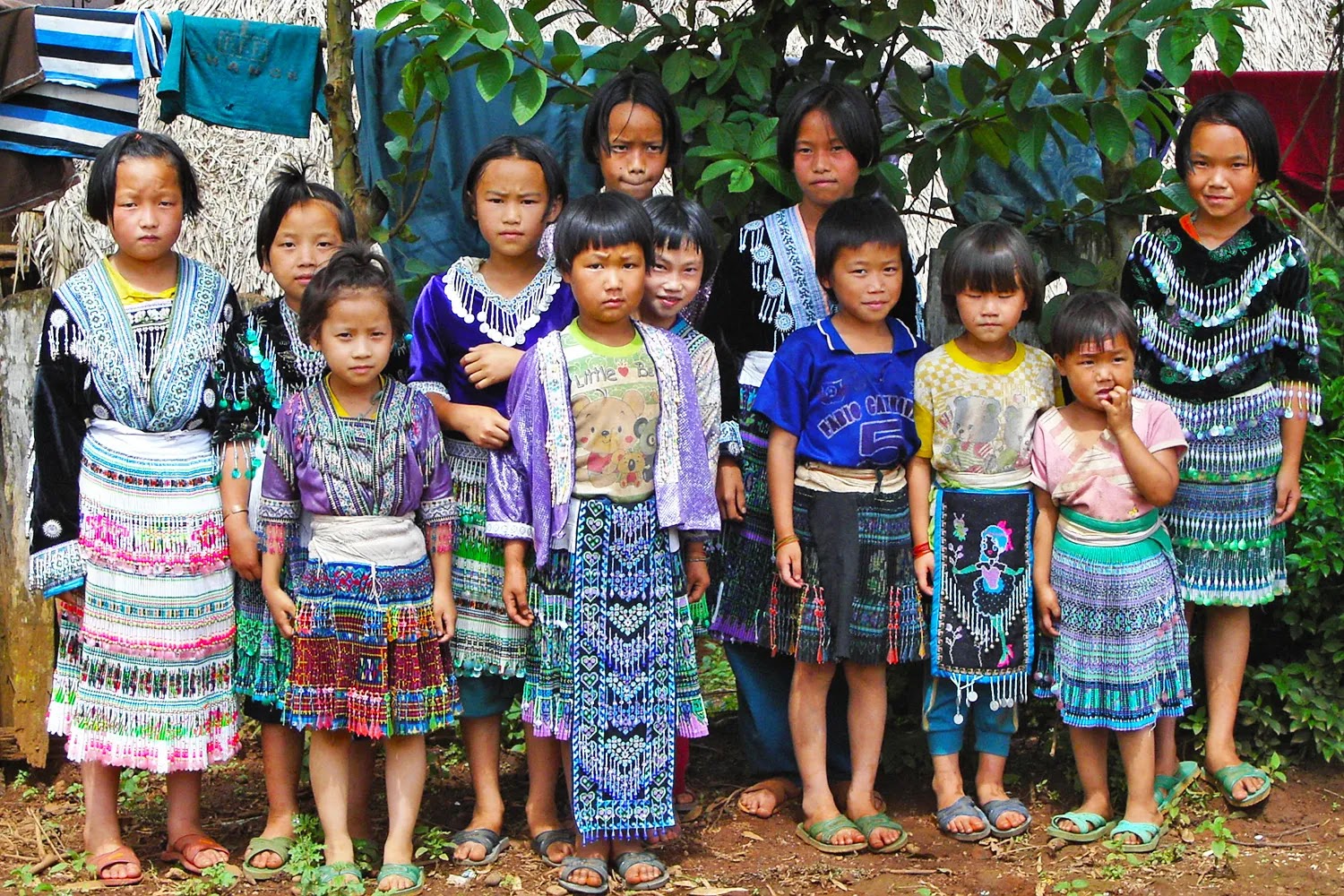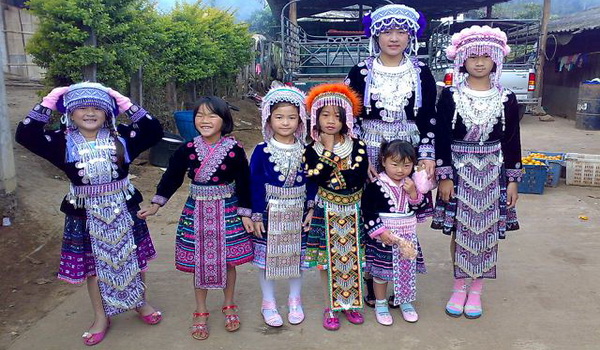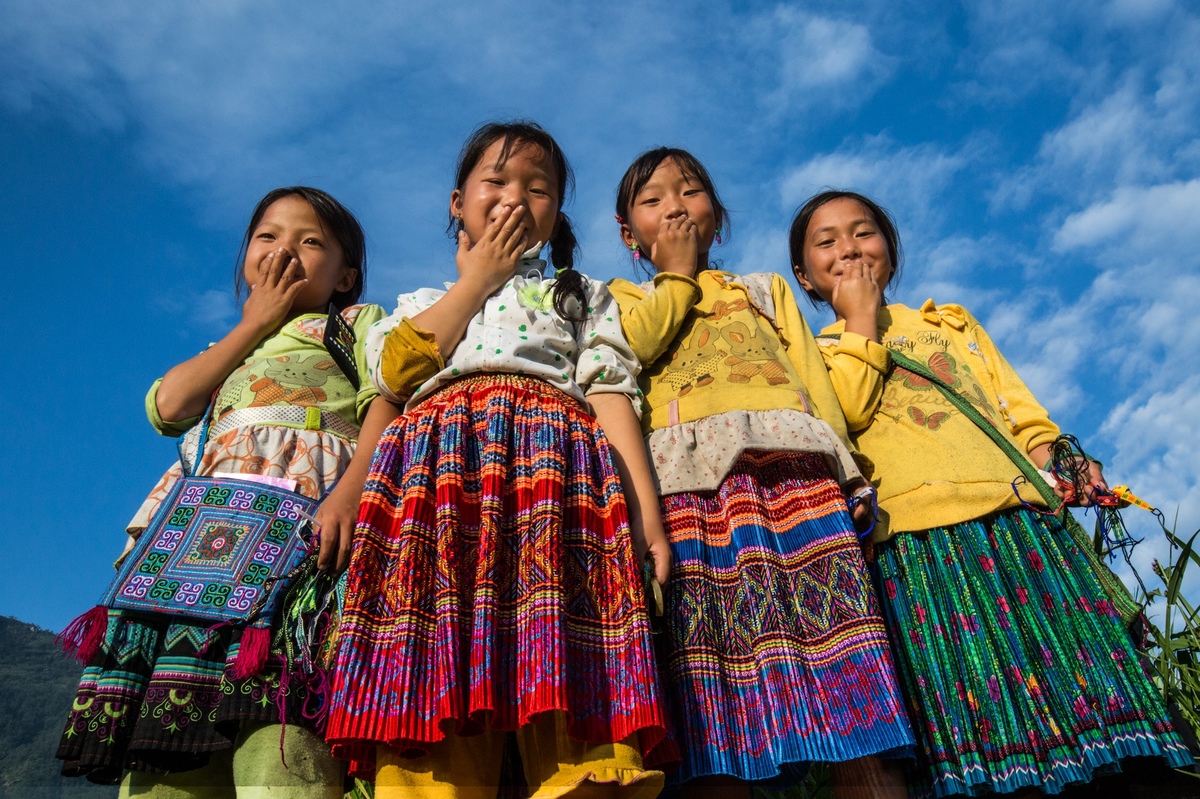Mythologies of the Hmong Tribe
The Hmong tribe (RPA: Hmoob, CHV: Hmôngz, Nyiakeng Puachue: 𞄀𞄩𞄰, Pahawh Hmong: 𖬌𖬣𖬵, IPA: [m̥ɔ̃́], Chinese: 苗族蒙人) are an indigenous group in East and Southeast Asia. In China, the Hmong people are classified as a sub-group of the Miao people. The modern Hmong reside mainly in Southwestern China and Mainland Southeast Asian countries such as Vietnam, Laos, Thailand, and Myanmar. There are also diaspora communities in the United States, Australia, France, and South America. The term Hmong is the English pronunciation of the Hmong's native name. It is a singular and plural noun (e.g., Japanese, French, etc.). Very little is known about the native Hmong name as it is not mentioned in Chinese historical records, since the Han identified the Hmong as Miao. The meaning of it is debatable and no one is sure of its origin, although it can be traced back to several provinces in China. However, Hmong Americans and Hmong Laotians often associate it with "Free" and/or "Hmoov" (Fate); it serves as a reminder to them of their history of fighting oppression. Before the 1970s, the term Miao or Meo (i.e. barbarians, wild, seedlings, and even "Sons of the Soil") was used in reference to the Hmong. In the 1970s, Dr. Yang Dao, a Hmong American scholar, who at the time was the head of the Human Resource Department of the Ministry of Planning in the Royal Lao Government of Laos, advocated for the term "Hmong" with the support of clan leaders and General Vang Pao. Yang Dao insisted that the terms "Meo" and "Miao" were both unacceptable as his people had always called themselves by the name "Hmong," which he defined as "free men". Surrounding countries began to use the term "Hmong" after the U.S. Department of State used it during Immigration screening in Thailand's Ban Vinai Refugee Camp. In 1994, Pobzeb Vang registered the term "Hmong" with the United Nations, making it the proper term to identify the Hmong people internationally.[17] Soon after, there was a political push from Hmong American politicians and activists to replace the term Miao with the term Hmong in China with little to no success.
Hmong, ethnic group living chiefly in China and Southeast Asia and speaking Hmong, one of the Hmong-Mien languages (also known as Miao-Yao languages). Since the late 18th century, the Hmong alone among the Miao groups have slowly migrated out of the southern provinces of China, where about 2.7 million still remain. See also China: People. Some 1.2 million have moved into the rugged uplands of northern Vietnam, Laos, Thailand, and the eastern parts of Myanmar (Burma). More than 170,000 live in the United States and nearly 20,000 more in France (15,000), Australia (2,000), French Guiana (1,500), Canada (600), and Argentina (600). (See Researcher’s Note: Hmong population figures and self-name.) The original home of the Hmong is thought to have been in the Huang He (Yellow River) basin of central China. They were slowly driven southward and marginalized by the expanding population of the Han Chinese. Traditionally, the Hmong practiced the shifting cultivation of unirrigated upland crops; buckwheat, barley, and millet were grown at the highest altitudes, and rice and corn (maize) at lower elevations. Virgin forest was cleared and burnt off for the planting of new fields; when soil fertility declined (usually after several decades), the entire village would relocate. New villages could be a considerable distance away from a group’s previous locale. In the late 19th century the opium poppy was introduced into the highlands by outside traders, and the Hmong began to cultivate it in an integrated cycle together with corn and dry rice. They sold opium to itinerant traders, usually Chinese, in return for silver. The silver was used in bridewealth payments, and the trading system often involved a loan against a future opium harvest. By the late 20th century, shifting cultivation had become impracticable except in a few remote areas. In response to government programs in Thailand, Laos, and Vietnam, the Hmong have now largely abandoned shifting cultivation and opium production. They have instead turned to the permanent-field cultivation of crops such as corn or the gardening of flowers, fruits, and vegetables, which they sell in lowland markets. Hmong society is organized through a number of patrilineal clans with Chinese surnames such as Li, Wang, and Yang. Smaller descent groups within these clans comprise people united through a known common ancestor and shared ancestral rituals. Surname exogamy, or outmarriage, is still strictly observed: a Li man may not marry a Li woman. An ideology of brotherhood unites the men of a particular clan, so that a man of the Li clan may expect to find hospitality from other Li “brothers,” wherever they may be living. The role of women in traditional clan culture is more ambiguous; their spirits were cared for in the afterlife, but their social status was low.
The Hmong people are members of an Asian minority ethnic group that traces its ancestry to the mountainous regions of southern China. Today, the Hmong people live in several different countries in Southeast Asia, including Thailand, Laos, Myanmar-Burma, and northern Vietnam. In the United States, however, the greatest number of Hmong people can be found in California, Minnesota, North Carolina, Rhode Island, Wisconsin, and Michigan. Language is a key identifier of the Hmong culture. Over four million people around the world speak the Hmong language, but there are many different dialects that are used to identify smaller groups within the culture. For example, Hmong people in the United States generally speak one of two major dialects: White Hmong (Hmong Der or Hmong Daw) and Green Mong (Mong Leng or Mong Njua). Gender roles in Hmong society are very traditional. Men are to provide for both the physical and spiritual welfare of the family, while women care for the children and maintain the household. At mealtime, it is customary in the Hmong culture to allow the men to eat before the women enjoy the meal. The wife is typically consulted before major decisions are made, but the husband is given the final authority. Divorce is very rare in traditional Hmong culture, but it is allowed. The husband maintains custody of all male children and the wife retains custody of all female children unless she has committed adultery. In this case, the husband is given custody of all children from the marriage. There is no uniform belief system among contemporary Hmong people. Many members of the Hmong culture are Christians, but there are also a number of people who continue the traditional spiritual practices that include animism and ancestor worship. Shamans, healers who act as links between the spirit and material world, are also sometimes consulted to provide herbal remedies or sacrifices of spirit money when someone is ill.
The Hmong are an ethnic group with deep roots in China and Southeast Asia, celebrated worldwide for their intricate textile art and oral traditions. Though primarily residing in China, Vietnam, Laos, and Thailand, many Hmong migrated to Western countries after 20th-century conflicts. This article delves into their history, artistic traditions, and how they preserve their identity in a globalized world. The Hmong trace their origins to the Yellow River basin in China over 4,000 years ago. Historically classified as part of the broader Miao ethnic group in China, they faced persecution during the 18th-century Miao Rebellions against the Qing Dynasty. These conflicts triggered mass migrations southward into the mountainous regions of Southeast Asia. By the 19th century, many Hmong communities settled in Laos, Vietnam, and Thailand. Their adaptation to highland environments led to unique agricultural practices, such as terrace farming and slash-and-burn cultivation. These methods sustained their communities but also isolated them from lowland societies. During the Vietnam War, Hmong in Laos allied with U.S. forces to combat communist troops in what became known as the Secret War. After the war, thousands fled to Thai refugee camps to escape retaliation. By the late 20th century, many resettled in the U.S., France, Australia, and beyond, forming vibrant diaspora communities.
The terms Hmong (IPA:[m̥ɔ̃ŋ]) and Mong ([mɔ̃ŋ]) both refer to an Asian ethnic group in the mountainous regions of southern China. There, they remain one of the largest sub-groups in the Miao (Chinese:苗族) minzu (nationality) along with other related ethnic minorities. Beginning in the eighteenth century, conflict with Han Chinese settlers migrating to the south caused Hmong groups began a gradual mass migration to Southeast Asia. As a result, Hmong currently live in several countries in Southeast Asia, including northern Vietnam, Laos, Thailand, and Myanmar. Traditionally, the Hmong practice subsistence agriculture and the harvesting of timber. During the last century, the Hmong have been caught up in the political instability which affected Southeast Asian nations. Many Hmong people in Laos fought against the communist-nationalist Pathet Lao during the Secret War. When the Pathet Lao took over the government in 1975, Hmong people were singled out for retribution, and a large number fled to Thailand. Many were resettled in Western countries, including the United States, Australia, France, French Guiana, and Canada. Others were returned to Laos under United Nations-sponsored repatriation programs. Around 8,000 Hmong refugees remain in Thailand. Hmong people have their own term for the subcultural divisions among themselves; two of the largest are White Hmong (Hmong Der) and Green or Blue Mong (Mong Leng). In the Romanized Popular Alphabet, developed in the 1950s, in Laos, these terms are written Hmoob Dawb (White Hmong) and Moob Leeg (Green Mong). The doubled vowels indicate nasalization, and the final consonants indicate with which of the eight lexical tones the word is pronounced. White Hmong and Green Mong people speak mutually intelligible dialects of the Hmong language, with some differences in pronunciation and vocabulary. One of the most obvious differences is the use of the aspirated /m/ in White Hmong (indicated by the letter "h") not found in the Green Mong dialect. Other groups of Hmong/Mong people include the Black Hmong (Hmoob Dub), Striped Hmong (Hmoob Txaij/Hmoob Quas Npab), Hmong Shi, Hmong Pe, Hmong Pua, and Hmong Xau. Since 1949, Miao has been an official term for one of the fifty-five official minority groups recognized by the government of the People's Republic of China. They live mainly in southern China, in the provinces of Guizhou, Hunan, Yunnan, Sichuan, Guangxi, Hainan, Guangdong, Hubei, and elsewhere in China. According to the 2000 census, the number of "Miao" in China was estimated to be about 9.6 million. The Miao nationality includes Hmong/Mong people as well as other culturally- and linguistically-related ethnic groups who do not call themselves either Hmong or Mong. These include the Hmu, Kho (Qho) Xiong, and A Hmao. The White Miao (Bai Miao) and Green Miao (Qing Miao) are both Hmong/Mong groups.





























Comments
Post a Comment